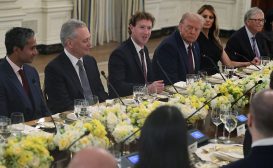Innovation as business, not buzzword
There’s considerable confusion about the business purpose of innovation, especially in government.
Many government officials talk about innovating to save time and money. While that’s not entirely wrong, it’s wrong enough to inadvertently cause problems. And it’s one of four ways I see government leaders tending to misunderstand the role and notion of innovation.
If government wants to follow commercial best practices, let’s start with the idea that companies don’t innovate to save time and money. They innovate to achieve business objectives — to wow customers, win new customers, add market share and increase revenue.
The parallel business objective in government is to create new value for customers — to add some gain or diminish some pain in a customer’s life. Creating value might be cost-effective in its own way, but saving time and money isn’t the best goal of innovation. Time and money have to do with operational efficiency, and that brings us to the next point.
A second misconception has to do with the difference between innovation and improvement. Innovation is about doing something different to create value for a customer. By contrast, improvement is about doing something different to create value for the organization.
It’s the difference between creating gain or reducing pain for a customer and saving time or money in operations. They’re not unrelated, but they are different business objectives requiring different planning, execution and evaluation measures. Confusing them risks achieving neither and further souring attitudes toward organizational change.
The third misconception is that innovation is about technology. When organizations do something different to create value for a customer, they do so in three areas — business, culture and technology. Technology is likely a part of all innovation today, and government can certainly facilitate business and culture change by introducing disruptive technology into its operations. But innovative companies know that rethinking business and culture models is more important than rethinking technology.
While innovation is a value proposition for customers, it’s also a business proposition for government. Change one model a little and you get incremental innovation. Change two models some and you might produce moderate innovation. Change all three models and innovation is disruptive. Those are business decisions management makes about exactly what to change or create in the organization, and how much value to offer which customer (or customer segment) and not others.
The final misconception is that innovation means finding innovative people “out there” and bringing them into government. Innovation isn’t like a language or programming skill. It isn’t a domain expertise. Of course there are people with innovation experience and expertise from whom government can learn — including from within government. But we need to think of innovation as an inherently governmental function and plan to innovate from the inside, out.
Government can learn innovation processes and practices from those who know them but only government can build its internal capability to innovate. If government doesn’t do that, what is the value of turning to innovation experts?
Government innovates more than most people know or appreciate; but it needs to innovate more. When my daughters are my age, government really should look and operate differently than when I was starting my career. Innovation, when applied the right way, offers useful ways government can become different — and stay different.
Lou Kerestesy has 30 years of experience in federal, state and local government. As founder of GovInnovators, his mission is to help government serve best by innovating itself, from the inside out. Contact him at via email at Lou@GovInnovators.com.






